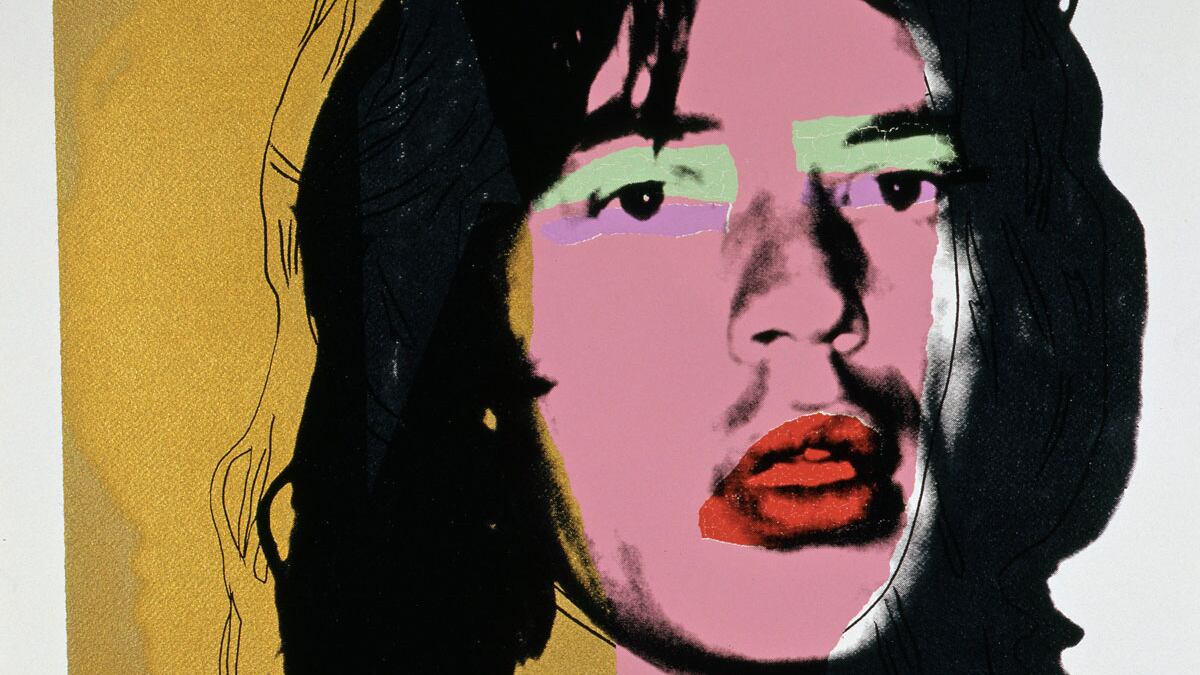When an artist reaches the level Andy Warhol has, when his work has become cemented in the annals of culture and history, something interesting happens: People stop asking if it's any good.
The Portland Art Museum's comprehensive exhibition of Warhol's work—the largest ever of its kind, with 250 screenprints spanning 35 years of the artist's career and two floors of the museum—finally gives us a chance to ask that question and to answer it for ourselves.
Alongside the iconic images that made Warhol famous (Mao, Marilyn, Campbell's) we get to see lesser-known works that we might otherwise never have the opportunity to encounter. The exhibition's greatest virtue is that it provides new peepholes into the mind of an artist we all thought we had a pretty good handle on.
It is disorienting to stand in front of sweet, childlike lithographs of butterflies and ladybugs from early in Warhol's career. So, too, does a screenprinted series of line-drawn flowers catch the viewer off guard. The muted pastel tones and simple compositions betray nothing of the artist who ran the Factory.
One entire gallery, with a sign clearly warning of images with sexual content, is devoted to a series of black-and-white, quasi-pornographic depictions of men having sex. Though explicit, they are beautifully composed, and introduce us to Warhol as a gay artist using his gaze in appreciation of the classical male form.
In this way—pingponging from ladybugs to penises to flowers to Mick Jagger—the entire exhibition has a certain whiplash quality to it.
In another gallery, a series of cartoonishly colored endangered animal prints are aesthetically cringe-worthy (even taking into account the fact that they were created in the '80s). If someone showed them to you and didn't tell you who had made them—which is to say, without the glossy cachet of the Warhol name laid over the top of them—you might think they belonged in the company of mass-produced schlock by Thomas Kinkade or Peter Max.
But across the same gallery hang Warhol's diamond-dust portraits of artists Joseph Beuys and Georgia O'Keeffe that will stop you in admiration, demanding your attention. The screenprints, which look like glimmering photo negatives, convey reverence for their subjects in a way that none of Warhol's other work does. This is how Warhol keeps us on our toes. He shows us that he is capable of substance without always offering it to us.
In a grouping of print advertisements that Warhol created for brands like Volkswagen, Life Savers and Apple, the wall tag quotes him: "I used to work for the magazines and I always thought I was being original, and then they'd never want it. This is when I decided not to be imaginative."
It's easy to get into a loop with Warhol: If an image seems meaningless and unimaginative, as many of them do, but the artist meant for it to be meaningless and unimaginative, does that automatically make it successful? Warhol's place in the pop-art canon would suggest that it does, but I would argue that judgments should be made on a case-by-case basis.
"As reworked film stills, the many sunsets freeze a moment in time, repeating an ephemeral still point until it is beyond recognition as an exceptional event," reads the wall text commenting on a series of screenprinted sunsets.
The problem with this type of interpretation of the work is that it can be said about almost anything. If you repeat an image hundreds of times of a child being born or of a man landing on the Moon, changing the color each time, it would erase the singularity and the exceptionality of the event. But why is that conceptually important?
On the other hand, repetitive images of an electric-chair chamber do exactly what they are meant to. They remind us how numbing it is to be exposed to so many images of violence in our culture.
"When you see a gruesome picture over and over again, it doesn't really have an effect," Warhol said about the series, demonstrating his most purposeful and powerful use of repetition and meaninglessness.
It is interesting to note that, with only a few exceptions, the lesser-known works in the exhibition carry the most emotional and aesthetic weight. This gives us a disturbing insight into what we value and canonize in our culture. Warhol is famous for the shiny, the unimaginative, the meaningless. These values continue to play out in the digital age as individuals live to feed the algorithms of social media, mass-producing content with quantity reigning over quality.
Perhaps if Warhol were still alive, he would surprise us and go the opposite way, giving us more substance at a time when we most need it.
Andy Warhol: Prints From the Collections of Jordan D. Schnitzer and His Family Foundation is at the Portland Art Museum, 1219 SW Park Ave., 503-226-2811. Through Jan 1.

